
Jihei Murase, Varnished and Corrugated Negoro Water Vessel, (2022)
Negoro-ji, Wakayama Prefecture, late Heian (c. 1100–1185 CE) – Shingon Buddhism follower Kakuban, with the support of the imperial household under Emperor Toba (r.1107–1123), developed the temple complex into a thriving cultural and religious center. By the Muromachi period (1336–1573) the close relationship between the prestigious temple and the mercury-derived vermillion lacquerware was established. The grouping of lacquer objects called “Negoro” is characterized by smooth, uniform shapes, bright vermillion finishes, and abraded skin. How did the famed wares gain such prestige, which carries into the modern day, during this period?
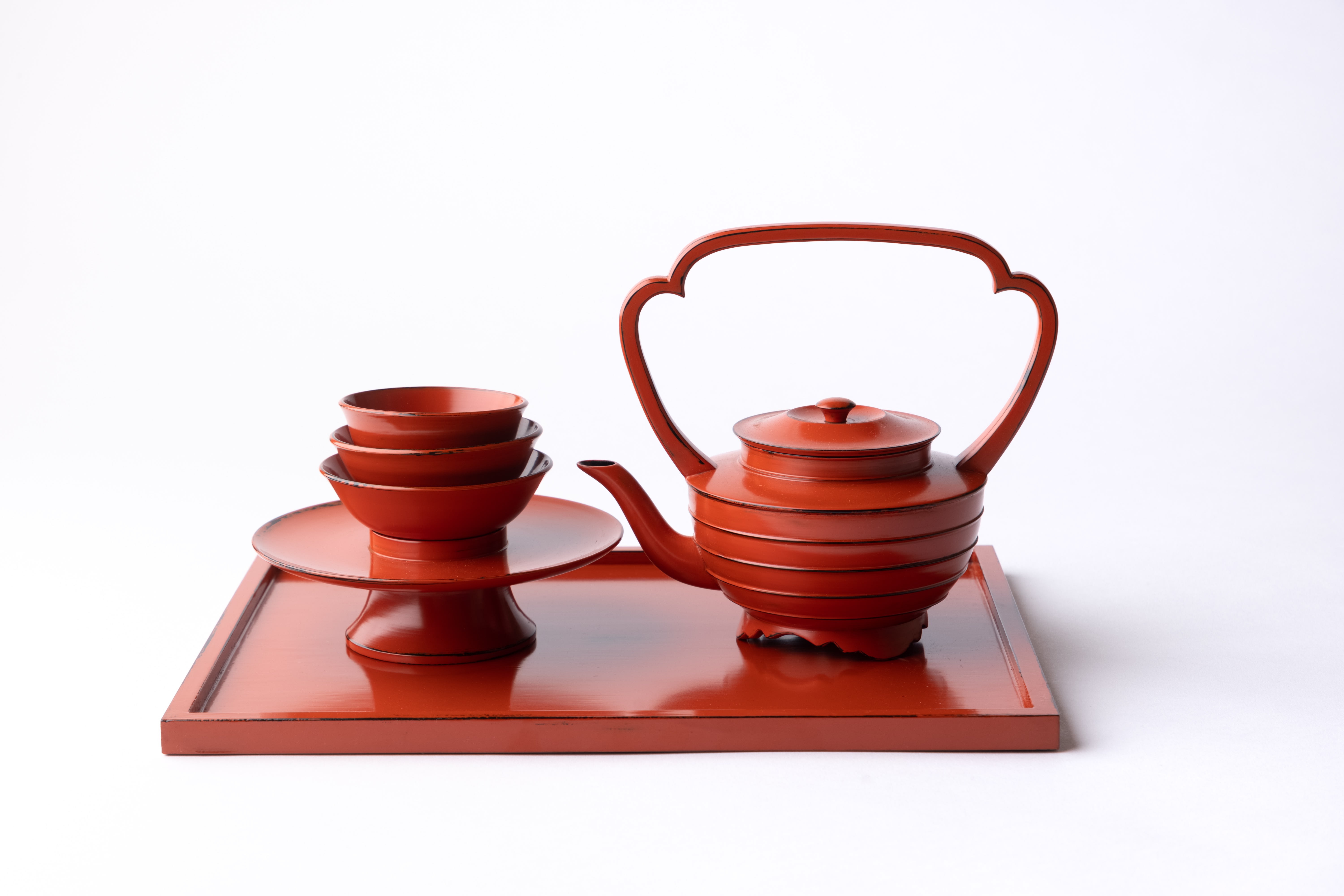
Jihei Murase, Negoro Sake Set; Bottle; Three Cups; Cupholder; Tray, (2022)
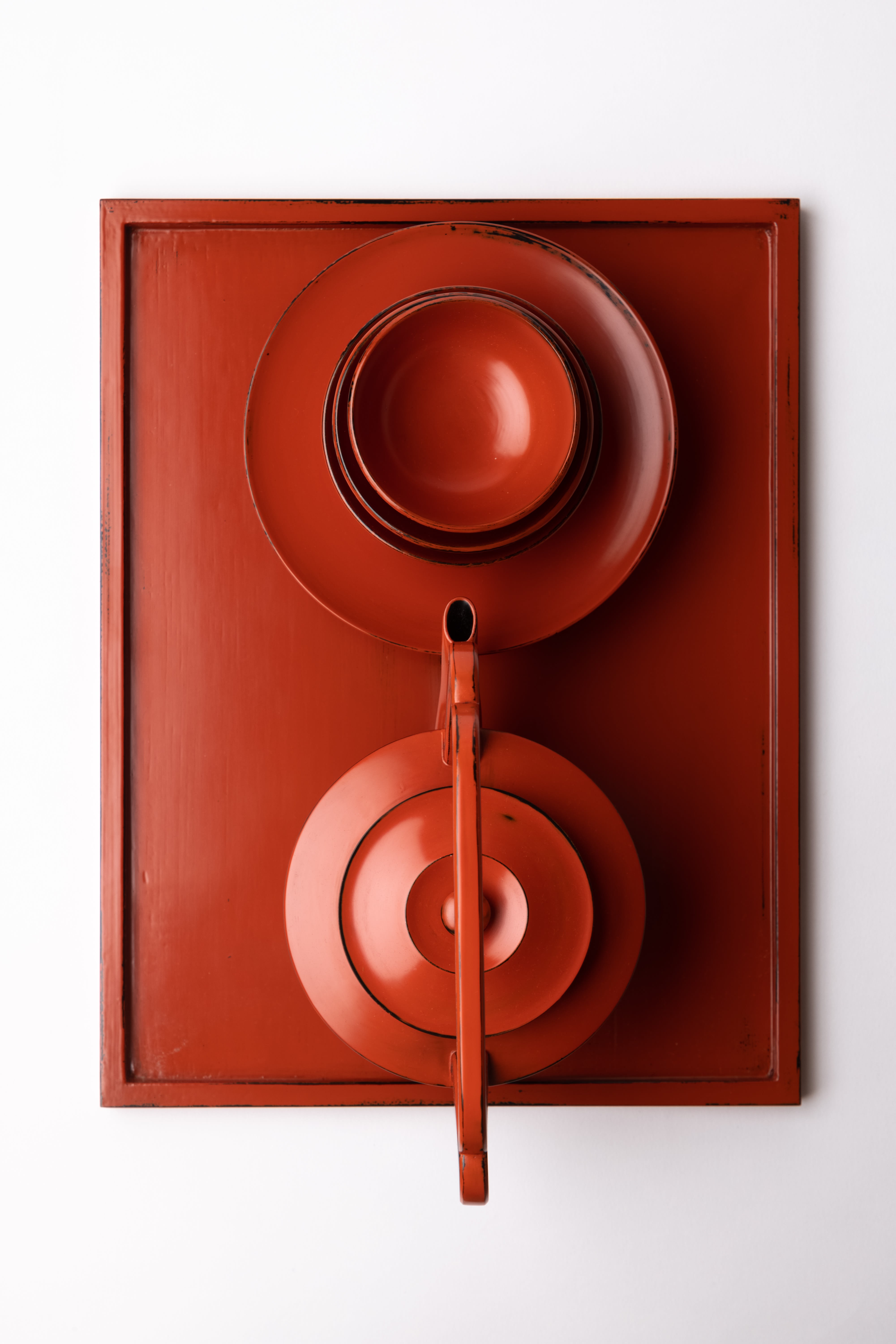
Jihei Murase, Negoro Sake Set; Bottle; Three Cups; Cupholder; Tray, (2022)
Intended as tools for rituals and every day ascetic living, Negoro wares included containers used as vessels for food offerings, floral trays, flower vases, liquid storage bottles, and water purifiers. According to record, the lacquerwares were first created for practical monastic uses. Gradually, the technique passed from the main temple complex to subsidiary temples across provincial borders owing to the attractiveness and elegance of the works. The color choice and value of the early Negoro objects are linked to the geographic proximity to rare mercury deposits necessary for producing the iconic vermillion pigment. Along with the cinnabar coloration extracted from the mercury, bengara (iron oxide) urushi lacquer generates the vermillion hue.
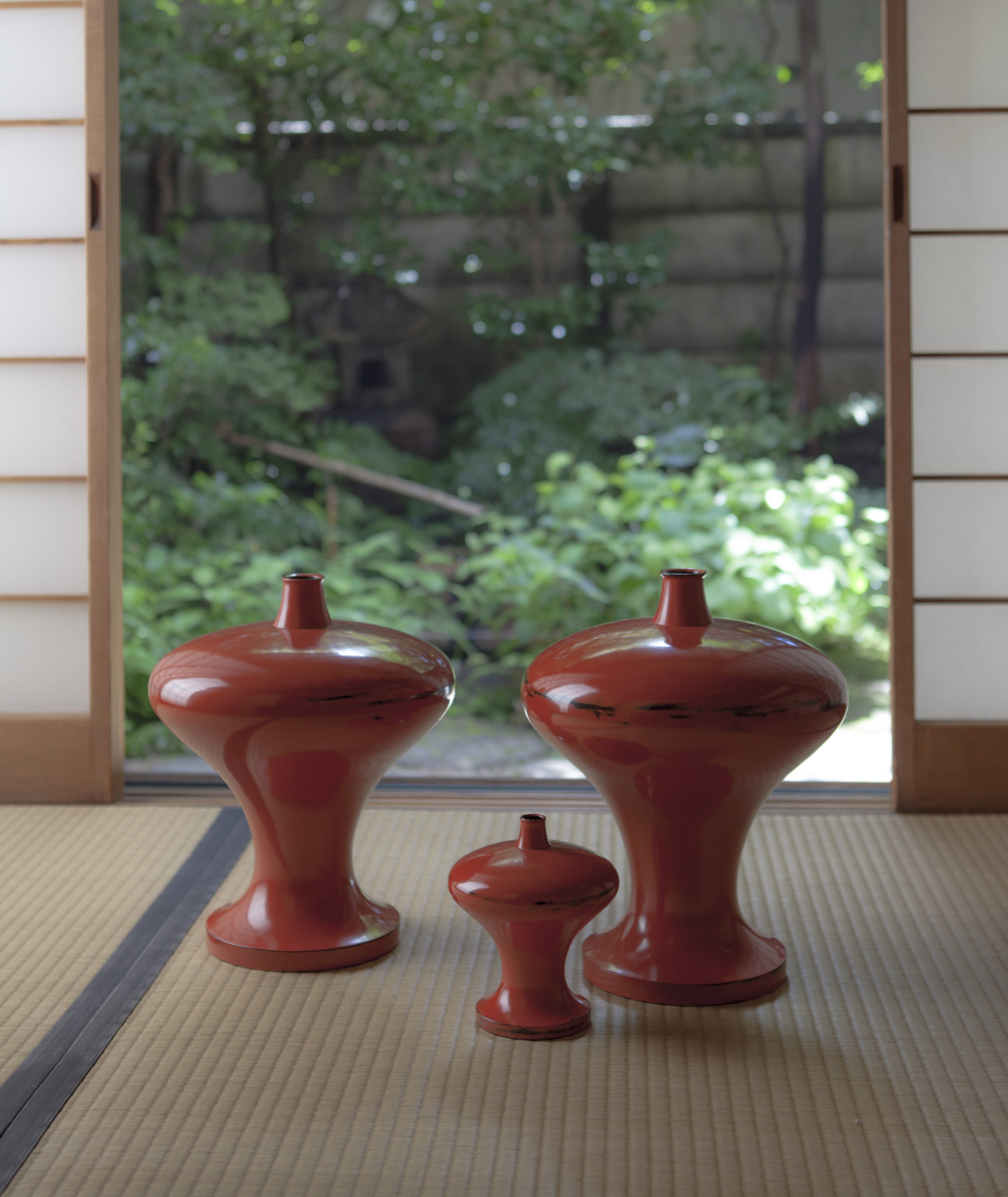
Jihei Murase, Negoro Bottlenecked Jugs, (2022)
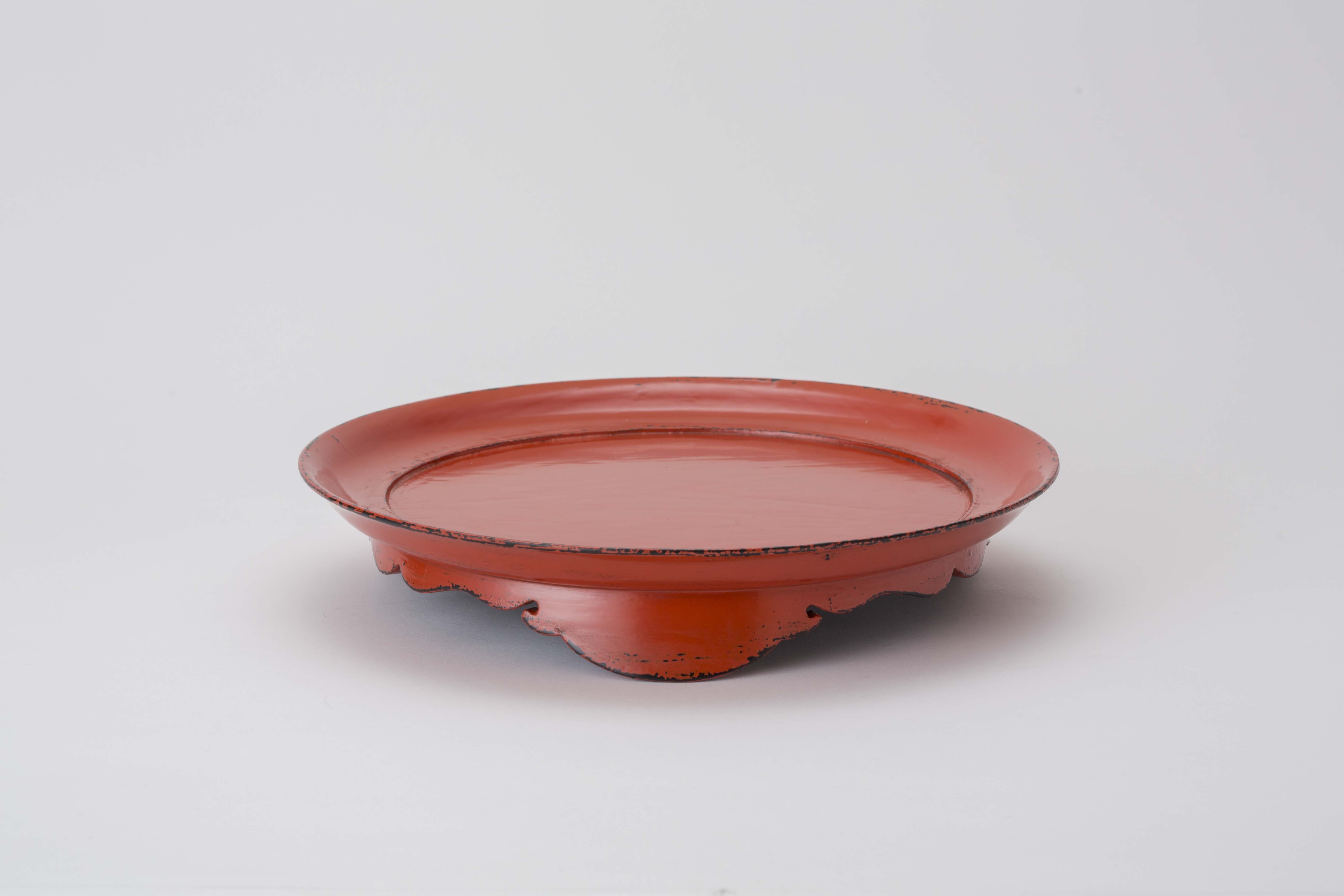
Jihei Murase, Carved-Flower Negoro Tray with Legs, (2022)
The modern day prestige of Negoro may be related to the conflagration of the temple complex by the warlord Toyotomi Hideyoshi in 1585. Along with the expansive enclave, the treasured lacquerwares were destroyed, save for a precious few. Black lacquer was already prominent throughout Japan, especially with the imperial court, since the ninth century. Now associated with the cultural glory of the temple, vermillion wares overtook black lacquer wares in popularity during the Muromachi period. The Negoro-style is the pinnacle of the vermillion group, not only due to the esteem paid to the history of Negoro-ji, but for their Buddhist symbolism. The excellent craftsmanship of the worn away surface and luxurious vermillion color visualizes the concept of transcendence: sanctification through aesthetic beauty. The presence of masterful lacquerwares like those of contemporary artist Jihei Murase elevate their environments, reminding us of the law of impermanence and the magnificence of nature.
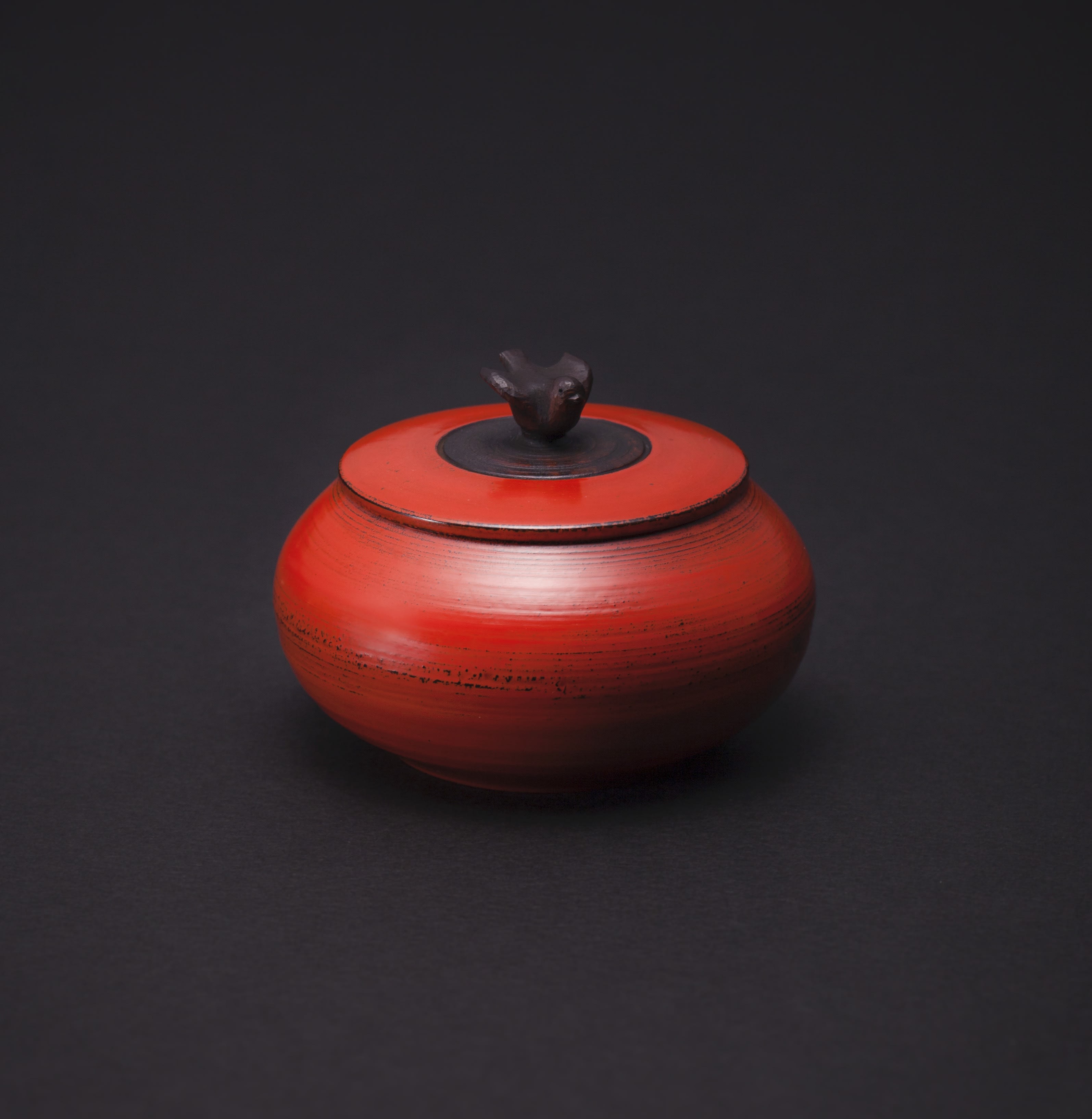
Jihei Murase, Chidori Engraved Negoro Herbal Container, (2022)
References:
Papist-Matsuo, Antje, "Enduring Beauty: On the Art of Negoro Lacquer," (2009).
Papist-Matsuo, Antje, “Iconography of Absence: Negoro Lacquers and the Sacred Geography of their Origin,” Ritsumeikan Studies in Language and Culture, (2017).
